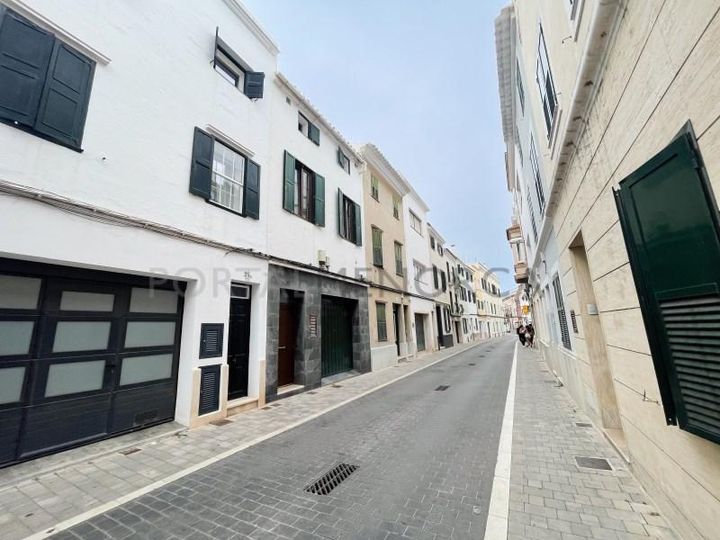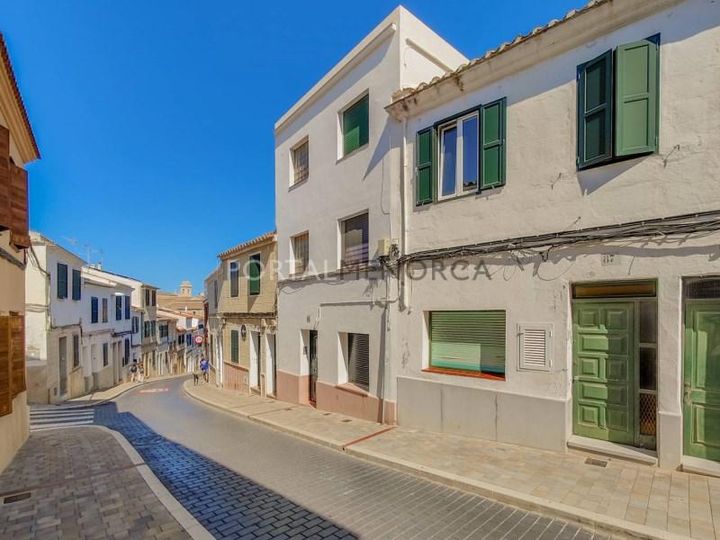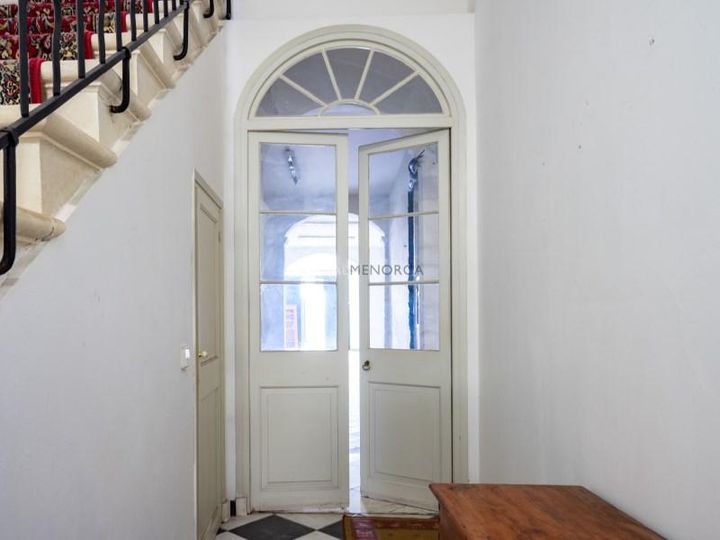Real estate prices in Centre Historic are influenced by a variety of factors, including historical significance, architectural style, and location. Properties located near iconic landmarks, such as cathedrals or museums, often command higher prices due to their cultural value and tourist appeal. For instance, a renovated apartment near the Plaça del Rei can fetch a premium because it is surrounded by medieval architecture and vibrant street life. Additionally, the condition and age of the building play a crucial role; well-preserved structures with unique historic features can attract buyers willing to pay more. Market demand is another critical factor; if the area experiences an influx of young professionals seeking urban living, this can drive up both rental and purchase prices. Lastly, local amenities like restaurants, shops, and public transportation accessibility also heavily impact property values, with districts that offer a rich array of services generally seeing a surge in desirability and consequently, prices.
Centre Historic
Location
Price Range
Any price
Price Range
Minimum
No min
Maximum
No max
Property type
Show all
Property type
Show all
House
Apartment
Building
Other
Bedrooms
Any beds
Bedrooms
Minimum
No min
Maximum
No max
Surface Range
Any surface
Surface Range
Minimum
No min
Maximum
No max
Sale type
For sale
Sale type
Show all
To rent
For sale
Location
Apartments and houses for sale in Centre Historic
5 results
Recent
Centre Historic insights
| Aspect | Summary |
|---|---|
| Population | Approximately 85,000 residents. |
| Average Property Price | €2,500 per square meter. |
| Rental Yield | 5-7% annually. |
| Average Rent | €1,200 for a 2-bedroom apartment. |
| Occupancy Rate | Around 90%. |
| Capital Growth Rate | 3-5% yearly. |
| Property Tax | Approximately 0.1-0.5% of property value. |
| Transaction Costs | 6-10% of the purchase price. |
| Expected ROI | 5-10% per year. |
| Economic Growth Impact | Moderate to strong, driven by tourism. |
Centre Historic FAQ
What factors influence real estate prices in Centre Historic?
How do historical characteristics affect property values in Centre Historic?
The historical characteristics of Centre Historic significantly influence property values through various factors. Properties in these areas often feature unique architectural styles, such as Gothic, Baroque, or Moorish designs, which attract buyers seeking authenticity and charm. For instance, a renovated building that maintains its original façade can command a premium over a more modern counterpart due to its aesthetic appeal and cultural significance. Additionally, the presence of historical landmarks, like cathedrals or ancient plazas, often enhances desirability, drawing tourists and businesses alike, which can escalate real estate prices. Moreover, the restrictions on renovations and developments aimed at preserving the historical integrity of the area can limit the supply of available properties, contributing to higher market values. In Centre Historic, areas that have been designated as cultural heritage sites tend to witness a steady appreciation in property values as demand often outpaces supply due to the limited inventory of original structures.
Are real estate prices in Centre Historic increasing or decreasing?
Real estate prices in Centre Historic areas of Spain, particularly in cities like Barcelona and Valencia, have shown significant fluctuations in recent years. In Barcelona, for instance, the pandemic initially caused a dip in prices as tourism plummeted, leading to an oversupply of rental properties. However, as travel resumed and remote work shifted the demand, the area has seen prices rebound sharply, particularly in sought-after neighborhoods like the Gothic Quarter. Conversely, in Valencia, properties in Centre Historico have experienced a more gradual increase due to a surge in interest from both domestic and foreign buyers, driven by lower average prices compared to Barcelona. Statistical reports indicate that apartment prices in Valencia's historic center rose by approximately 10% over the past year. Meanwhile, local policies aimed at preserving historical architecture can also impact prices, as renovations are often costly and may limit new developments. Additionally, areas like Toledo and Granada exhibit similar trends, where real estate prices fluctuate based on the balance of tourist demand and the availability of local amenities.
What are the average property prices in Centre Historic?
Average property prices in Centre Historic areas of Spanish cities can vary significantly based on location, type of property, and current market trends. For instance, in Barcelona's Gothic Quarter, prices can range from €3,500 to €6,000 per square meter, largely due to the area's historic charm and tourist appeal. In Seville's Santa Cruz neighborhood, properties typically cost between €2,500 and €4,000 per square meter, reflecting its narrow streets and rich cultural heritage. Madrid's La Latina district can see averages around €3,000 to €5,000 per square meter, with newer developments pushing prices higher. In Valencia's historic district, prices hover between €1,800 and €3,000 per square meter, making it slightly more affordable compared to larger cities. Each of these areas showcases unique characteristics that contribute to their property values.
How do local amenities impact real estate prices in Centre Historic?
Local amenities play a crucial role in influencing real estate prices in Centre Historic. High-quality schools, parks, and cultural institutions can significantly enhance property values, as families and individuals often seek vibrant neighborhoods that provide convenience and enrichment. For example, proximity to renowned museums or historical landmarks can attract buyers with an appreciation for culture and history, driving up demand. Additionally, access to public transportation options, such as metro lines or bus stops, typically increases desirability, as it allows for easy commuting options to other parts of the city. Restaurants, cafes, and boutique shops contribute to the area's charm, making it a preferred destination for young professionals and tourists alike, thus raising property values. Furthermore, safety and cleanliness in public spaces often correlate with higher real estate prices, as they create a more appealing living environment.
Is Centre Historic a good area for investment in real estate?
Centre Historic in Spain boasts a rich cultural heritage, which can attract both tourists and locals, making it a potentially lucrative area for real estate investment. The historical architecture and vibrant atmosphere often enhance property values, particularly for residential and commercial real estate. For instance, properties close to iconic landmarks like the Sagrada Família in Barcelona or the Alcázar in Seville could see consistent demand from short-term renters and buyers seeking charm and character. Moreover, the area benefits from well-established infrastructure, including public transport and amenities, which can appeal to families and young professionals. Rising interest in restoration projects and urban revitalization initiatives also indicates that properties, especially those in need of renovation, could yield substantial returns if developed.
What trends are shaping real estate prices in Centre Historic?
Real estate prices in Centre Historic are significantly influenced by several key trends. First, the increasing popularity of urban living among younger demographics has led to higher demand for residential properties, particularly in historically rich areas. This demand is often driven by proximity to amenities, cultural attractions, and vibrant lifestyle options. For instance, in cities like Barcelona and Madrid, properties in historic districts have seen price surges as millennials seek to experience vibrant city life. Furthermore, the trend of foreign investment in Spanish real estate, often from non-EU countries, is pushing prices upward as international buyers seek to acquire unique properties in these sought-after areas. Additionally, the trend of converting historic buildings into luxury apartments or boutique hotels has enhanced the appeal of these locales, further driving prices. Renovations and government incentives aimed at preserving cultural heritage also play a role, as they can increase property values by making neighborhoods more attractive and livable. Local tourism growth, particularly post-pandemic, has also strengthened the rental market, impacting the purchasing power of potential owners and existing tenants alike.







